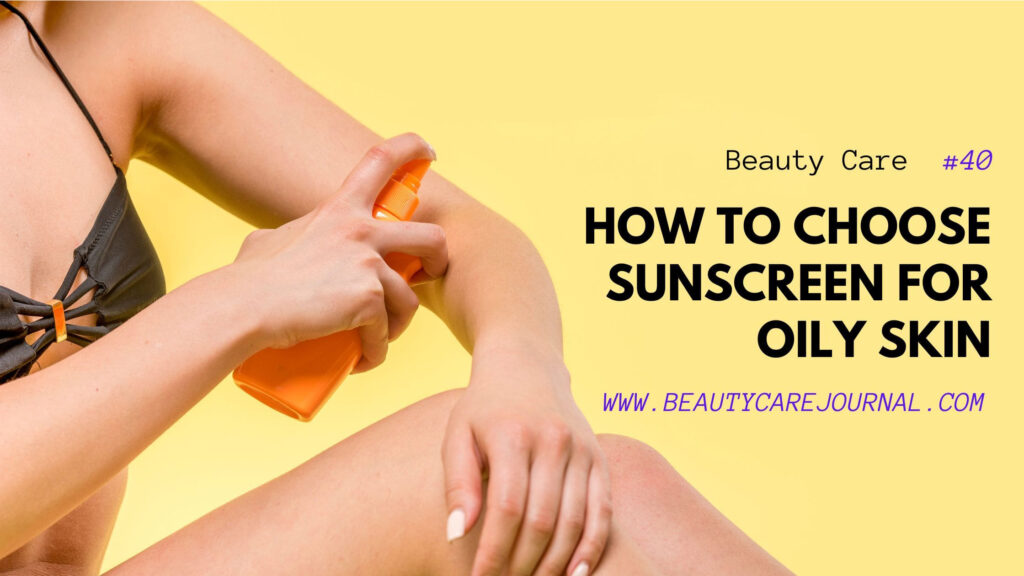
Protecting your skin from damaging UV rays is critical in the scorching sunshine of summer, as well as in the cooler months. However, for people with oily skin, choosing the correct sunscreen might be difficult. Have no fear! In this thorough guide, we’ll walk you through everything you need to know about selecting the best sunscreen for oily skin, so your skin stays protected and shine-free all year.
Understanding Oily Skin and Sunscreen:
Before we get into the choosing process, let’s explain why oily skin requires extra consideration when it comes to sunscreen. Oily skin produces extra sebum, which can cause blocked pores, breakouts, and a glossy complexion.
Importance of Sunscreen for Oily Skin
Even if you have oily skin, you should protect it from the harmful rays of the sun. Sunscreen helps prevent sunburn, premature ageing, and skin cancer.
How to Choose: Sunscreen for Oily Skin
When choosing a sunscreen for oily skin, there are certain aspects to look for to ensure that it protects well without increasing oiliness.
- SPF level: For effective UVB protection, choose a sunscreen with an SPF of at least 30.
- Non-comedogenic Formula: Look for sunscreens branded “non-comedogenic” to avoid pore blockage and outbreaks.
- Lightweight Texture: Select lightweight formulations, such as gels or oil-free lotions, that will not feel heavy on the skin.
- Mattifying Properties: Look for sunscreens that have mattifying components such as silica or kaolin clay to help regulate excess oil during the day.
- Broad-spectrum Protection: Make sure the sunscreen protects your skin from UVA and UVB radiation.
- Water-Resistant Formula: For long-lasting protection, especially during outdoor activities or swimming, use a water-resistant sunscreen. This guarantees that the product works even when exposed to water or perspiration.
Top Sunscreen Ingredients for Oily Skin:
Certain substances are particularly useful to oily skin types. Look for sunscreens that contain:
- Zinc oxide and Titanium Dioxide: These mineral-based compounds offer broad-spectrum protection without blocking pores.
- Dimethicone: Serves as a lightweight emollient, delivering moisture without greasiness.
- Niacinamide: Regulates sebum production and reduces the appearance of pores.
- Salicylic Acid: Exfoliates the skin, reducing breakouts and producing a clearer complexion.
Application Tips:
Proper application is essential for guaranteeing excellent protection while minimizing oiliness.
- Generous Application: Apply sunscreen liberally to all exposed regions of the skin at least 15 minutes before sun exposure. Don’t forget about frequently ignored places such as the ears, neck, and tips of the feet.
- Frequent Reapplication: Apply sunscreen every two hours, or more frequently if swimming or sweating excessively. Even water-resistant solutions can wear off with time, so it’s critical to stay protected throughout the day.
- Use of Mattifying Products: To increase oil control, apply a mattifying primer or powder over sunscreen.
- Best Sunscreens for Oily Skin: Discover some of the top-rated sunscreens particularly designed for oily skin, including alternatives from recognized companies and experts.
Choosing the right sunscreen for oily skin is essential for maintaining healthy, protected skin without exacerbating oiliness. By considering factors such as SPF level, non-comedogenic formula, and key ingredients, you can find a sunscreen that meets your skin’s unique needs. Remember to prioritize sun protection every day to keep your skin looking its best!
1. Can sunscreen make oily skin even oilier?
Not necessarily. Using a sunscreen designed for oily skin, such as an oil-free or mattifying option, can help manage shine without increasing oiliness.
2. How do I know if a sunscreen is suitable for oily skin?
Look for labels that state oil-free, non-comedogenic, or mattifying formulations. These are intended to give sun protection without blocking pores or imparting unnecessary shine.
3. Should I prioritize SPF or oil-control properties in sunscreen for oily skin?
Look for a sunscreen with both appropriate SPF protection and oil-control qualities to guarantee complete sun protection without increasing oiliness.
4. Can I wear makeup over sunscreen for oily skin?
Yes, you can. For the greatest results, use oil-free or non-comedogenic makeup products and let the sunscreen penetrate completely before adding makeup.
5. How often should I reapply sunscreen for oily skin?
Reapply sunscreen every two hours, or more frequently if swimming or sweating profusely, to ensure good protection throughout the day.
6. Will using sunscreen daily help control oily skin in the long run?
While sunscreen does not directly limit oil production, it can help to prevent premature aging and lower the chance of skin cancer, both of which are issues for oily skin.
7. Can I use a moisturizer with sunscreen for oily skin?
Yes, you may choose a moisturizer with SPF for increased convenience. Just make sure it’s safe for oily skin and offers enough sun protection.
8. Can sunscreen cause breakouts on oily skin?
It’s conceivable if the sunscreen is overly thick or comedogenic. Using a non-comedogenic product made particularly for oily skin can aid in preventing outbreaks.
9. Are there any specific ingredients to avoid in sunscreen for oily skin?
Individuals with oily skin should avoid strong emollients such as mineral oil or petrolatum, as well as scents and alcohol, which can be irritating.
10. How can I remove sunscreen buildup without stripping my oily skin?
Choose mild cleaning solutions that efficiently remove sunscreen residue and excess oil without overdrying your skin. Double washing, using an oil-based cleanser first and then a mild foamy cleanser, can be useful.


